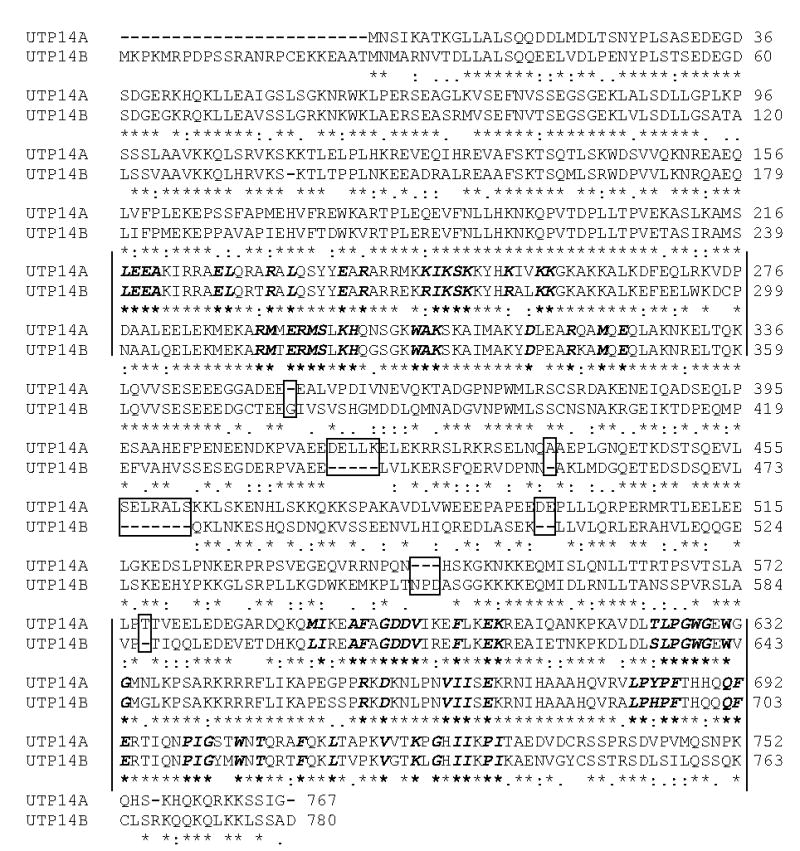Fig. 7.

Alignment of UTP14A and UTP14B proteins showing identities, similarities, and conserved structural motifs. Two regions of containing a large percentage of highly conserved amino acids are shown between the bars; the ones shown in bold italics are conserved (absolutely or as a conserved substitution) across phyla. There is spatial conservation (i.e. the number of amino acids between those marked as conserved) across phyla between the first and last conserved amino acid within these regions. Amino acid deletions and insertions within the core of the UTP14B peptide are indicated by dashes and boxes around the amino acids. At the amino terminus of UTP14B there are an additional 24 amino acids. An asterisk (*) indicates amino acid identity, two dots (:) indicates conserved substitution, one dot (.) indicates similarity, and no symbol indicates other random substitutions. The two peptides share 66% identity and 76% homology.
